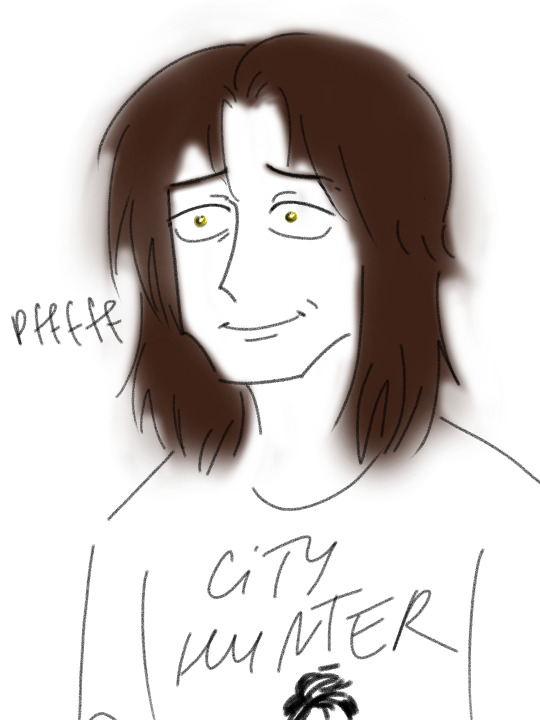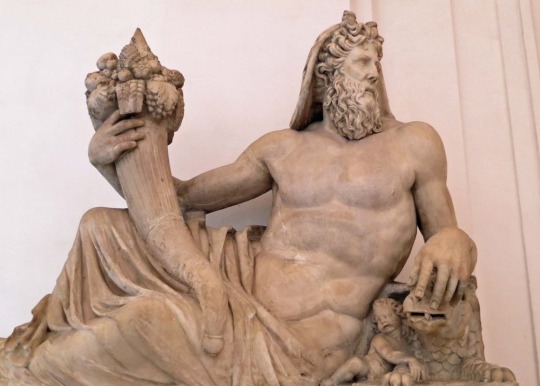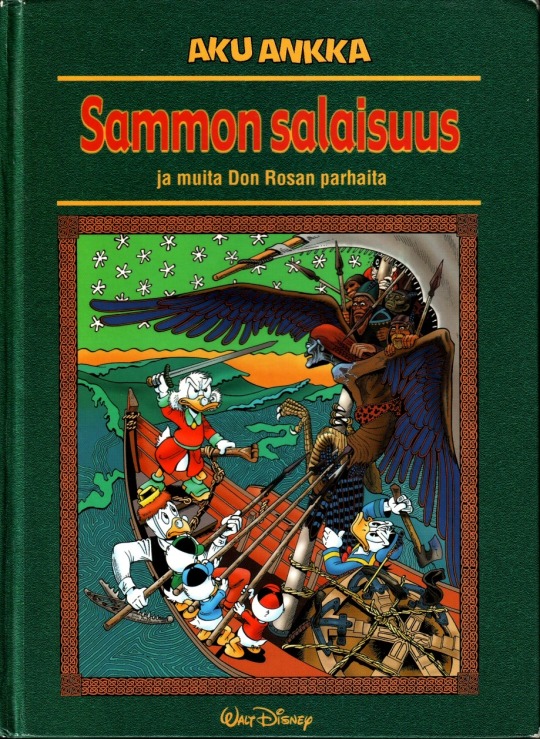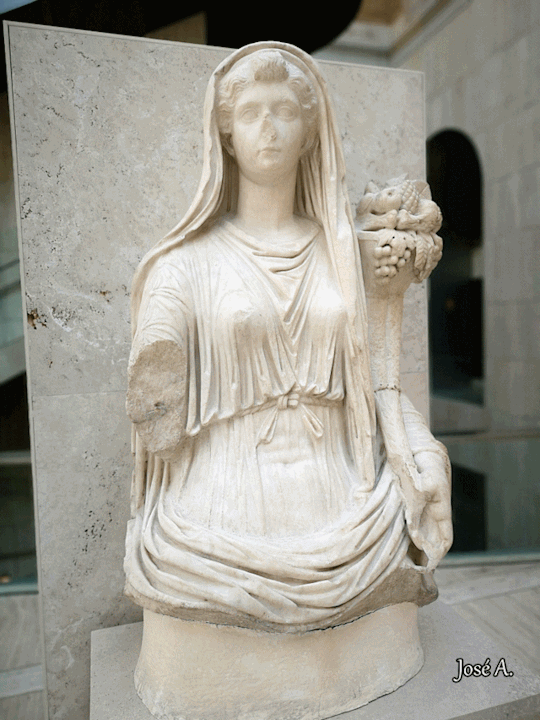#ancient baltic
Note
You like historical clothing, yes? Would you be willing to either give me some tips or resources about historical Lithuanian clothing for men?
Thank you!!
Sure I who not mind, i choose the ancient baltic clothing
Early Iron Age (I–IV centuries AD)
Clothing is believed to be of a tunic style. Tablet-woven sashes with simple, longitudinal designs are worn, tied at the waist or to embellish the garment edges. The cloth is woolen, woven on vertical frame looms in a 3-shaft twill pattern. Women’s headwear is embellished with small, round or flat metal pieces, their fronts adorned with ornaments hung on twisted, two-stranded wire. Another special type of women’s headwear from this period covers the temples with a symmetrical pair of flat, ring or coil shaped ornaments. We still do not know if this jewelry was worn for specific occasions. The metal ornaments from the period are subtle in form, made of silver filigree, with incrustations of azure blue glass and framed in red, black or green enamel.
In the later part of this period, these types of ornaments, as well as elaborate multicolored glass bead necklaces brought from the Roman Empire, are no longer in evidence. The dominant technique for making ornaments becomes metal casting; decorative elements echo patterns found in tablet-woven sashes: longitudinal designs made up of dots, triangles, or series of open circles. Designs on brooches consist primarily of arched ladders. Long needle-like pins worn by women are bobbin shaped, or less commonly they have rounded blue ends, worn in pairs, joined together with one or two small chains and pinned to the shoulder region. Ornaments worn around the neck have trumpet or cone-shaped ends, often with azure blue dangles. Bracelets are massive and cut from a round piece of metal, or less commonly, made from braided pieces of metal. During this period both men and women wear such arm decorations, usually one on each wrist. Bracelets made of braided metal are especially popular.
Middle Iron Age (V–VIII centuries AD)
The clothing style as well as the cloth worn during the Middle Iron Age remains much the same as before: the woolen cloth is still woven on upright frame looms, and sashes have the same linear patterns. The metal ornaments, however, are not as subtle in style as before. They are much larger and the bodies of many of the pins and brooches are made of bronze and covered with a thin layer of silver; minimizing the amount of precious metal used.
During this period women begin wearing skull caps – a few rows of short woven decorative elements, interspersed with cast flat metal pieces, decorated with metal eyelets and strung together on woolen thread. Bracelets are still massive, with only the portion encircling the wrist being somewhat narrowed, their ends are now wider. Women wear one or two on each arm, while men adopt the habit of wearing one very large bracelent on the left wrist. This is the so-called “warrior” bracelet, intended to protect the wrist when holding a battle shield.
Necklaces made of glass beads are typically worn only by women, although men of the Aukštaičiai tribe also wear such neck ornaments. Both men and women wear amulets made of amber – typically a large bead, cone-shaped at both ends, that was hung from a brooch, sash, or woman’s straight pin. As before, needle-type pins are worn in pairs, connected with small chains and decorated with small hanging ornaments. In the northern regions these are a woman’s primary accessory clothing element; brooches, such as those worn by men, are not found with their clothes.
The women of the southern Baltic tribes use brooches to fasten their clothing. These are circular in shape, cast in bronze or silver, and often decorated with serpent head motifs, or sometimes with poppy seed pods. Men wear leather belts with raised metal clasps, and sashes from which they hang their weapons, and tall boots fastened at the knee with belt buckles.
Late Iron Age (IX–XIII centuries AD)
During the Late Iron Age the ornamentation of the clothing worn (and, we believe, the clothing silhouette itself) changes. Brooches now have a horseshoe shape rather than the earlier circular shape. We find some of them in men’s graves, leading us to surmise that men’s clothing from the period was cut down the center and that the brooches were used as buttons. The tablet-woven sashes now have more complicated patterns of geometric rhombi, and cross and swastika motifs.
Along with woolen cloth, beginning with the 10th century, we now find cloth made of linen. The larger quantity of woven material leads us to believe, that towards the end of this period, the Balts, like other European peoples, have now learned to use horizontal looms. With the advent of flax cultivation, we begin to see the use of thread made of a wool/flax combination in woven sashes and later, in scarves.
As before, women enjoy wearing knotted skull caps, although now their small metal ornaments are no longer cast, but rather hammered into various shapes and embellished with intertwined ellipses, swastikas, triangles and rhombi. These pieces are strung on braided or spun linen thread rather than on strands of wool. Bracelets are mostly of braided metal. Men continue wearing a massive bracelet on their left wrist, but now these are wrapped in a long woven sash and strung with small rings (chainmail). The Semigallian wimples are adorned similarly with small chains strung together on a long string, as are Samogitian womens’ hats/headwear. Maple tree whirligig-shaped ornaments hang from their fronts.
Clothing often is embellished with tiny round metal beads, a style especially favored by Semigallians. Samogitian women string and hang beads in a flat rhombus shape on their robes, so that as they move, the beads touch each other and make a tinkling sound. Selonian women like to pin tubular bronze pins on their robes to form various geometric designs; the tunics of the Latgalian men are similarly adorned.
Important parts of the “dress uniform” of warriors/soldiers are tall boots and a leather belt covered with hammered bronze plates ending in woven bronze tassels. During this period neck ornaments are made of braided metal with loop and hook closures. Those worn by Selonian women have flat, curved ends decorated with geometric motifs; some have additional flat metal pieces or small round bangles arranged in a trapeze shape. Often these bangles are used to form a part of womens’ necklaces along with braided elements and glass beads. As before, bracelets are mostly of braided metal, although their central portions are widened and geometric forms added.
XIII–IV centuries AD
The changes in outfits worn during the 13th – 14th centuries are even greater. Along with the traditional and locally made garments of linen and wool, we now find imported weaves of silk and brocade. Because of their expense, these materials are used only in sashes and textile-based headwear. Plaid scarves can now be found. Headwear has also changed; now it is made of sashes of wool or silk and decorated with small, four or five-sided flat plates; spaces between them are filled with threaded bead embroidery (biserio).
The shape of brooches changes, such that now we find round, cast brooches with a hole in their center used for fastening. Small horseshoe-shaped brooches are found arranged vertically on the right side of the neck, most likely having been used to fasten the opening of a dress or underclothes. Bracelets are uncommon and the ones found are now of a different shape – in the form of bands made from pieces of bent, decorated sheets of metal, or tripartite and joined with loops.
Necklaces are made from small glass beads, with rounded, four-sided, or cross-shaped dangles and seashells. Earrings are a new accessory and are worn primarily by Balt women, who also begin to wear metal-plated belts of the type that men wear, as well as a new “invention” from the West – leather pouches with closures attached to their belts. Also worn are amulets – claws of male bears encased in bronze, and cast bronze keys with rhombus-shaped tops in a gothic style.
The men’s outfits of this period are much harder to determine from the available archaeological material. Nevertheless, we can deduce that men wear woolen socks and tall boots, and linen underclothes. They sport wool tunics woven on a three shaft loom, with their garments held together with bronze plated belts from which would hang a leather pouch and knife.
#lithuanian historical clothing#lithuanian history#historical clothing#ancient baltic#baltic tribes#baltic history#lithuanian hetalian#hetalian#madam of Lithuania answers#ask answered#ask#madam of lithuania#madam of lithuania's ramblings
15 notes
·
View notes
Text
Mythtalia March: Guide
1. Reblog this post to participate.
2. Use the event hashtag #Mythtalia March and mention @hwsevents so I can be notified of your post.
3. Follow this blog to stay updated.
4. You can create as many works as you want for a prompt.
5. Every day is a Free Day. You can use or ignore the example prompts I give.
6. Be patient with me. I may get busy and forget to check. If it's been a few days and I seem to have missed your submission, let me know.
7. You may submit fanart, fanfiction, cosplay, crafts, poems, and animations.
8. Everything submitted must be your own work.
9. Long posts must be under a read more.
10. Anything gory/explicit must also be under a read more and have necessary warnings.
11. Be respectful and considerate.
12. Please consider supporting creators with reblogs and comments!
13. Since none of my example prompts are mandatory, you guys are free to start working on any ideas you may already have!
@nsfhetalia @hetaliacalendar @hetaliahappenings @heta-on-the-books
_______
What is Mythtalia March?
#mythtalia march#hetalia#hws#aph#hetalia events#nyotalia#hws events#hws allies#hws itabros#hws ancients#hws nordics#hws baltics#hws g8#hws russia#hws greece#hws egypt#hws japan#hws china#hws england#hws america#hws turkey#hws hungary#hws asean#hws germany#hws belarus#hws lithuania#hws canada#hws scotland#hws ireland#hws rome
73 notes
·
View notes
Text
This sounds very similar to Canadian First Nations buffalo jumps, and those Saudi kites that herded animals toward a cliff.
34 notes
·
View notes
Text


A bit strange feeling of living in Lithuania while looking like... Lithuania
#fun fact my voice is also close to ht Lithuania UNLESS I am very pissed off#then my voice drastically becomes super low#and when I'm singing too#and in everyday life I have this 🌸✨️🌸✨️🌸✨️ aura around me while 99% of time I am thinking about killing stupid and cruel people#and i have giant eyebags and super slim figure because of the fucked up mental health due to ruzzian invasion...#thinking about my family's village which is famous for having “vikings heritage”#my great grandfather wanted to excavate a local landmark: a stone grave with an ancient cross.#he and his friends found a giant warrior there#with a huge sword#they got so scared that they just covered it all up and ran away#I WANT TO EXCAVATE IT AGAIN SO MUCHHHH#i am 99% sure that warrior was Baltic like come on what would Nordic vikings do in the swamps of Northern Ukraine#my village is honestly such a strange place... it's pagan#it has some Baltic and Asian heritage since like Golden Horde times#swamps and forests are such a well preserving place whatever the hell was going on there thousands of years ago still lives now#it's the jungles with scary people#it has some nasty history of incest too... and Christian sect...#it's a godforsaken place with NOTHING there except for the ancient graveyard and a couple of houses but FOR SOME REASON random people still#go to live there. and they die there. like why#u stoopid go get a job
9 notes
·
View notes
Photo

Everything is prepared for the summer solstice celebration, Latvia, June 23, 2023. Photo by D.P.
P.S. This summer during many ancient rituals at many bonfires in Latvia, people asked for help from the ancient forces of nature to destroy the "Empire of Evil"...The previous evil created by the Kremlin collapsed, and the current one created by the modern Kremlin will collapse as well...
#Latvia#summer solstice#ancient gods#nature's power#bonfire#original photography on tumblr#sky#fire#water#wildlife#earth#Baltic States#Northern Europe
40 notes
·
View notes
Text
The Kerberos and Prometheus from 1899 aren’t the only mysterious ships around! Archaeologists in Sweden are working to unravel the story of two enigmatic ships filled with household goods.
93 notes
·
View notes
Video
youtube
Laulusild: Bridge of Song · Estonian Philharmonic Chamber Choir · Paul Hillier
#youtube#Baltic Runes#Bridge of Song#laulusild#let's sing#music loves#classical music#early music#Estonia#Estonian Philharmonic Chamber Choir#Paul Hillier#Ancient Ways#sacred ways#Traditions#culture#Tormis#Sibelius#Kreek#Bergman
2 notes
·
View notes
Text
Here in Finland, Thanksgiving is not celebrated at all. On the subject, however, we have a national cornucopia myth. The national epic Kalevala focuses on the Sampo story, which is a kind of miraculous mill, whose forging and the struggle to own it are told in the poems.
Keywords: cornucopia, folklore, Kalevala, witches, envy

youtube
🎧Is from Hunger Games The national anthem Horn of Plenty. In the film (s) it is like the goddess Diana is fighting against the evil ideology, but she herself becomes an ideology.

In the Greek mythology Zeus as a child broke his nursemaids horn (she was a goat Amaltheia), that became a Horn of plenty. A kind of magical phallos - mother was no longer needed.

Miracle mills can be found in fairy tales and folklore round the world. Philosophers have always been preoccupied with the question of whether man would be happy if he did not have to strive for his livelihood. Even Neurological research supports the idea that the search itself gives a meaning, the seeking process. (Panksepp).

In the ancient Finnish (Baltic-Finnish peoples) poems Sampo had a very prominent role. The most familiar story we find in the Kalevala. The main characters in the Sampo poems are: the wise man Väinämöinen, the blacksmith Ilmarinen, the queen of the north Louhi. All of them have magical powers. I have made some non-serious “player cards” that might make it easier to remember these characters.




Matriarch Louhi helps the wizard Väinämöinen, basically saves his life. As a reward she asks a Sampo, magical mill. Väinämöinen knows that a blacksmith Ilmarinen could make it. Mistress Louhi has also a lot of daughters. Both Ilmarinen and Väinämöinen start a competition where they try to prove their value to Louhi.
Finnish myth Sampo is also a cornucopia myth. Like so often in the myths, things go badly and the task remains unreachable. In the myth of the Sampo men of the väinöland are trying to steal the Sampo back from the phallic woman, by using phallic means.
It is suggested that the Finnish word “kateus” (envy) is synonymous with “Noita” (witch). It is oftentimes suspected that part of the 15th-17th century witch-hunts was the result of hunger. That people lived through particularly bad harvests. But the Envy does not explain the phenomena fully. Surely it is one emotion that featured in those times, between the neighbors.

Psychoanalytical point of view: As Melanie Klein has stated, envy is in all of us and the lack reinforces it. Magical phallos is denial of the lack - in the perverse universe (Chassequet-Smirgel) the lack is denied and the desired thing is stolen rather than worked through.
The opposite is to tolerate the rejection and trauma of smallness. Integration of good and bad images of the mother/object (and your self), and acceptance of the difference can lead to growth. Inner space - mother’s special force stays with her like the lid of the Sampo in the myth is finally scattered for everywhere. In many magic mill -tales it is lost in the sea. “Pushed back in to the subconscious” - like G.Hägglund & V.Hägglund have suggested.
#thanksgiving#cornucopia#cornucopias#kalevala#mythological#finland#baltic sea#psychoanalysis#melanie klein#Janine ChassequetSmirgel#don rosa#Zeus#ancient greek#poetry#National epics#breast envy#envy#witchcraft#magic#witch#noita#Youtube#SoundCloud#panksepp#loviatar#louhi#akseli gallen kallela#hunger games
9 notes
·
View notes
Text




#lithuania#baltic#nature#aesthetic#beautiful#forthill#trees#ancient trees#pathway#road#mystical#summer#summer aesthetic#witch aesthetic#my photo#my photography
6 notes
·
View notes
Link

The Dnieper Balts are a theoretical grouping of Eastern Baltic tribes whose very existence is known only from the names of rivers in the region.
#history#historyfiles#balts#dnieper#dniepr#river#baltics#ancient europe#ancient history#slavs#belarus
7 notes
·
View notes
Text
I'm not fucking listening to a video on geopolitics if you're gonna but dramatic fucking generic as shitty movie music in the background
This isn't Batman trying to figure out what the Joker is up to, this is real world shit going on, and I'm fairly familiar with the subject and you just happened to have a detail I don't know as much about in your title
So I'm like cool, let me learn about what's going on with that
Well I'm clearly not gonna with your shitty video. You're a backwards clickbaiting moron trying to drum up investment using techniques I think are cheap and bland in even movies, so why would I want them here?
You absolute pissant, you fucking stain on society, you're a worthless little idiot with nothing useful to say that's trying to turn important shit into entertainment and I think you suck ass
Fucking hell, imagine I talked about the US economy while playing bad dramatic music in the background, it would be stupid
I clearly know more about this than you, for an american civilian with no special access to information, I'm probably one of the better informed people on this subject. Your yank ass can fuck off cause it's really only people actually from the area and actual professionals that are gonna know more than me on this
I am actually annoyed, and I'm just annoyed by every last fucking thing being turned into entertainment by random little internet parasite
#bitch I know plenty about kaliningrad and the suwalki gap#what I don't know is what's actually going on in kaliningrad at the moment or how it's being used at this exact moment#it doesn't directly impact stuff going on in Ukraine; and that's the stuff I keep up with#so I'm just like... ok; lets hear about the state of kaliningrad; what's happening there at the moment#(other than a pretty good chance of electronic warfare coming out of there; I assume that's the origin of interference in flights and stuff#like I know a reasonable amount about the black sea fleet... I know more or less nothing about the baltic fleet... update me#but you fucking can't you drooling clickbait idiot#'the suwalki corridor' blah blah blah blah; ancient news; everyone fucking already knows about the Bild's article about a possible attack#I don't lend it much credibility; not unless russia succeeded in Ukraine which we damn well better not let happen#yap yap yap; you got nothing of value to say to me#I'm not saying I'm a genius with this (though I seem to understand things better than many western politicians)#(like the strategic short shortsightedness is astounding; removing every ounce of humanity)#but like I said; for an american I'm well informed; it's really only experts (some) and eastern europeans who are likely to know more#I know about the Kharkiv front and I know about how western policy on not using western weapons on russian territory#really was a key factor in it happening; and I know about the change in policy that just happened#I don't follow the frontline cause... I stopped being able to emotionally keep up with each meter of ground being fought for#but I know the broadstroke and I know how many Ukrainians die because of the west failing to provide support#and I understand the importance of stopping russia to help deter China#so what exactly do you have to teach me youtube boy with your shitty dramatic music#this isn't a game; this isn't a show; people are dying and I haven't got time for you
0 notes
Text
Here's my another drawing from my art school
I drawn the ancient baltic woman



#lithuanian artist#beginner artist#wannabe artist#lesbian artist#queer artist#female artists#lithuanian art#ancient baltic#ancient lithuania#baltic#my artwork#my art#artwork#art
15 notes
·
View notes
Text
I'm thinking of having Mythtalia March be similar to how MerMay works where it's kind of just the whole month and you can choose to follow my prompt suggestions or do whatever.
#aph#hws#hetalia#hetalia events#hws events#hetalia g8#hws nordics#hws ancients#hws allies#hws main trio#hws baltics#nyotalia
15 notes
·
View notes
Text
The Egyptians were importing lapis lazuli from Afghanistan in the predynastic period, and this would seem to be about the same distance. The world was a busy place in the ancient world.
18 notes
·
View notes
Text
Incredible Images of Ghost Ships at Bottom of the Baltic

The beauty and mystery of The Baltic Sea are just like those of any other ocean or sea. Waves crash against the shorelines of nine countries, including Sweden, Russia, Finland, Latvia, and Estonia, among others. Divers and marine archaeologists see the Baltic Sea as the world's largest underwater museum, making it different from other deep waters. A ship graveyard is also a possibility. The Baltic Sea has been described as a ship graveyard.
Although, the salinity level is exceedingly low (one percent or less), the molecular structure of the water is comparable to that of fresh water, which creates a fantastic environment for shipwreck preservation. Two factors - cold temperatures and the lack of marine life - combine to create optimum conditions for preserving everything from wooden boats of the 17th century to metal submarines used during World War II.
0 notes
Text
For over 450 years no one knew what happened to the colossal Swedish warship, Mars. When it was finally rediscovered in 2011 no one was prepared for what was found.
#Mars#Shipwreck#Curse#Treasure#Baltic Sea#warship#Swedish#underwater#ancient#history#ancient origins
39 notes
·
View notes